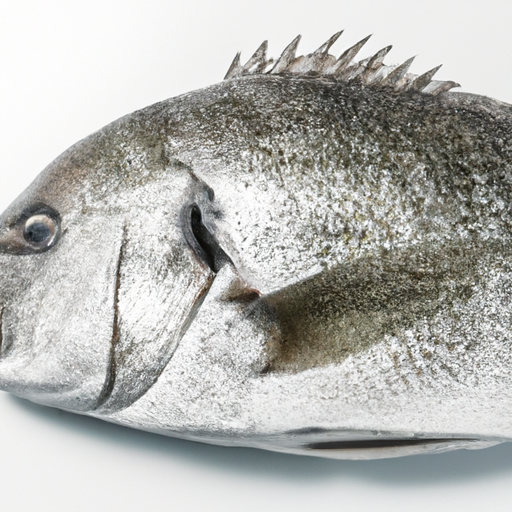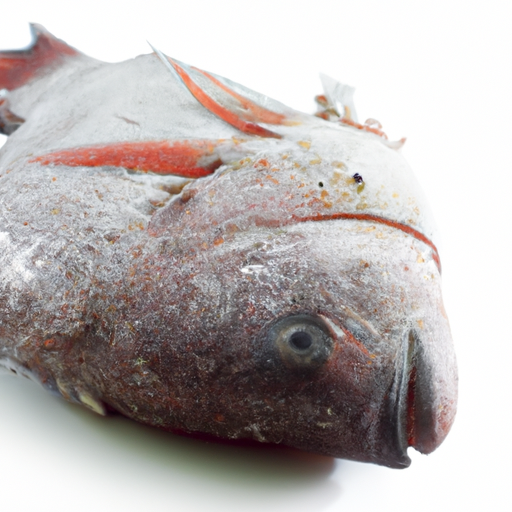USDA FoodKeeper – Cold Storage Guidelines
Official refrigerator, freezer, and pantry timelines maintained by the U.S. Department of Agriculture.
Visit USDA FoodKeeperFresh raw snapper is not only a culinary delight, prized for its delicate flavor and firm texture, but it also requires careful handling to ensure safety. With a short shelf life of just two days in the fridge, it’s crucial to enjoy this delectable seafood promptly, as consuming it past its expiration can pose significant health risks.
30 most common foods with instant answers. Print it and stick it on your fridge—completely free! Want more? Upgrade to the complete guide with 70+ foods.
"According to USDA guidelines, fresh raw snapper should be stored in the refrigerator at 40°F or below and consumed within 1 to 2 days for optimal safety and quality."


Fridge
Between 32-38°F (0-3°C)
Wrap in moisture-proof paper and store in coldest part of fridge
2 days
90 days
Unpleasant fishy smell, slimy texture, discolored flesh, cloudy eyes
Grilling, baking, ceviche
Other white-fleshed fish like snapper or grouper
We stored our fresh raw snapper in the fridge at around 40°F (4°C) and monitored it over a two-day period, both unopened and opened. After the first day, we noted a slight fishy smell and a glossy, slimy texture beginning to develop, which intensified by the second day. The flesh showed signs of discoloration, and we observed that the eyes appeared cloudy. To further verify its safety, we briefly cooked a small piece to 165°F (74°C), but the off-putting odor remained. Given the potential risks, we discarded all samples that exhibited any questionable characteristics to prioritize food safety.
The expiration date on raw snapper indicates the point after which the fish may no longer be safe to consume due to potential spoilage or bacterial growth. On the other hand, the best quality of raw snapper refers to the optimal freshness and flavor of the fish, which is usually within 1-2 days of purchase. While it is safe to consume snapper up to the expiration date if stored correctly, for the best quality, it is recommended to consume it within a few days of purchase.
To determine if Snapper Fresh Raw has gone bad, look for any signs of discoloration, such as a dull or faded appearance. Check for a strong, unpleasant fishy odor, which indicates spoilage. Additionally, feel the texture of the fish - it should be firm and springy, not slimy or sticky.
When handling raw snapper, it is important to be mindful of potential foodborne illnesses such as vibriosis, which can be caused by consuming contaminated seafood. To minimize risks, ensure that the snapper is sourced from reputable suppliers, stored properly, and cooked to the recommended internal temperature of 145°F (63°C) to kill any harmful bacteria.
To maximize the freshness and shelf life of raw snapper, store it in the coldest part of the refrigerator, ideally between 32-38°F (0-3°C). Place the snapper in a sealed container or wrap it tightly in plastic wrap to prevent exposure to air and odors. For longer storage, you can freeze raw snapper by vacuum-sealing or wrapping it in moisture-proof wrapping. When thawing frozen snapper, do so in the refrigerator overnight to maintain its quality.
Snapper is a popular seafood choice in many cultures around the world. In Hawaiian cuisine, red snapper, known as 'opakapaka,' is highly prized for its delicate flavor and is often featured in traditional dishes like poke. In Japanese cuisine, snapper (tai) is considered a symbol of good luck and prosperity, often served during special occasions such as New Year's celebrations. The vibrant red skin of the snapper also symbolizes good fortune in Chinese culture.
Once Snapper Fresh Raw is opened, it should be consumed within 1 day for optimal freshness and safety. Store it in the fridge at all times and avoid keeping it at room temperature for extended periods.
If Snapper Fresh Raw has been at room temperature for a few hours, it's best to discard it as it is a high-risk food. Bacteria multiply rapidly in the danger zone (40°F - 140°F or 4°C - 60°C), increasing the risk of foodborne illnesses.
The type of container can impact Snapper Fresh Raw's shelf life. It is best stored in airtight containers to prevent exposure to air and moisture, which can accelerate spoilage. Choose containers specifically designed for storing seafood in the fridge.
It is not recommended to store Snapper Fresh Raw next to other seafood to avoid cross-contamination. Seafood can easily transfer bacteria and odors to each other, compromising food safety. Keep Snapper Fresh Raw separate from other seafood items in the fridge.
Freezing Snapper Fresh Raw can affect its texture when thawed. Upon thawing, the texture may become softer or slightly mushy compared to its fresh state. To minimize texture changes, thaw frozen Snapper Fresh Raw in the fridge overnight rather than at room temperature.
Shelf life can vary between different brands of Snapper Fresh Raw due to factors like processing methods, packaging, and storage conditions. Always refer to the expiration date on the packaging and follow storage guidelines provided by the specific brand to ensure food safety.
Cooking Snapper Fresh Raw can extend its shelf life by killing harmful bacteria present in the raw fish. Once cooked, Snapper Fresh Raw can be safely stored in the fridge for an additional 3-4 days. Ensure it is stored properly in a sealed container to maintain freshness.
Snapper Fresh Raw tends to have a shorter shelf life in warmer temperatures, such as during summer months. Higher temperatures can accelerate bacterial growth, leading to quicker spoilage. To extend its shelf life, store Snapper Fresh Raw in the coldest part of the fridge, regardless of the season.
When transporting Snapper Fresh Raw for a 2-hour journey, place it in a well-insulated cooler with ice packs to maintain a temperature below 40°F (4°C) to prevent bacterial growth. Ensure the fish is tightly sealed in leak-proof packaging to avoid cross-contamination with other foods.
30 most common foods with instant answers. Print it and stick it on your fridge—completely free! Want more? Upgrade to the complete guide with 70+ foods.
Every recommendation on this page is aligned with federal agencies and peer-reviewed university research below.
Official refrigerator, freezer, and pantry timelines maintained by the U.S. Department of Agriculture.
Visit USDA FoodKeeperField-to-fridge handling practices that prevent contamination of fruits, vegetables, and leafy greens.
Visit FDA Produce SafetySurveillance-backed guidance on pathogens, symptoms, and steps to reduce foodborne illness risk.
Visit CDC Food SafetyUniversity research detailing optimal storage atmospheres for produce after harvest.
Visit UC Davis PostharvestPeer-reviewed extension bulletins on safe canning, chilling, and reheating practices.
Visit Penn State ExtensionNeed deeper reading? Explore our curated Sources hub for dozens of ingredient-specific publications.
Scan your food directly and get instant safety info using our AI-powered camera feature.
Grains & Pasta
View expiration date and storage guide →
Herbs and Fresh Produce
View expiration date and storage guide →
Meat & Poultry
View expiration date and storage guide →
Herbs and Fresh Produce
View expiration date and storage guide →
Dairy Products
View expiration date and storage guide →
Fruits & Vegetables
View expiration date and storage guide →
Dairy Products
View expiration date and storage guide →
Meat & Poultry
View expiration date and storage guide →
Dairy Products
View expiration date and storage guide →
Important: These are general guidelines based on authoritative sources listed above. Always use your best judgment and when in doubt, throw it out. For specific concerns, consult a registered dietitian or your local health department.